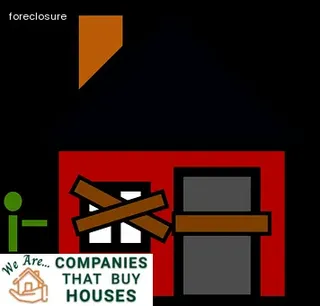In Utah, the preforeclosure process is an important step before the foreclosure of a property. Before a lender can take legal action and begin the foreclosure of a home, they must provide proper notification to the borrower.
This typically includes sending a notice of default that outlines the full amount due, any fees associated with it, and instructions on how to pay them off. The borrower then has a set amount of time to cure their debt or reach an agreement with their lender.
If an agreement cannot be reached during this period, then the foreclosure process will proceed. During this period, lenders are also required to file a complaint in court which includes all documentation on the loan and its delinquency.
This gives borrowers additional time to try and renegotiate or resolve the issue before being forfeited from their home. It's important for borrowers to understand that each stage of this process is time-sensitive and can have long-term implications if not handled properly.
Utilizing legal assistance early on in the preforeclosure process can help ensure that one’s rights are protected throughout all stages of foreclosure proceedings and that they are given ample opportunities to avoid losing their house.

Understanding the foreclosure process in Utah can be a complicated endeavor due to the varying regulations and procedures that are in place. Before filing for foreclosure, lenders must adhere to certain requirements outlined by Utah state law.
These include providing the borrower with a written notice of default along with an opportunity to cure the delinquency, or pay back any missed payments within a set period of time. Additionally, the lender must provide evidence that they own the loan before filing for foreclosure and must also provide proof that all associated fees have been paid.
Furthermore, there are time limits in place requiring lenders to complete the foreclosure process within a certain period of time. After filing for foreclosure, homeowners have the right under Utah law to redeem their property if they can pay off any accrued debt and interest prior to being foreclosed upon.
Finally, once a home is foreclosed on, it will go through an auction process where it can be purchased by a new buyer. Understanding these various steps and laws is essential for anyone looking to navigate through Utah's foreclosure process successfully.
When it comes to understanding the length of Utah's foreclosure process, it is important to be aware of the common processes used in the state. Generally speaking, there are two main types of foreclosure processes that are typically used: judicial and non-judicial.
Judicial foreclosures involve a court proceeding where a judge will oversee the process and order a sale of the property if necessary. Non-judicial foreclosures take place outside of a courtroom setting, allowing lenders to pursue foreclosure action without going through the court process.
In Utah, lenders must file a complaint with the court if they wish to pursue a judicial foreclosure, while non-judicial foreclosures are conducted by filing a notice of default with the county recorder's office. The specific timeline for each type of foreclosure varies depending on circumstances but typically ranges from three months to more than twelve months.
It is important to note that each step in the process should be followed meticulously in order for all parties involved to understand their rights during this time period.

Homeowners in Utah facing foreclosure have certain rights that they should be aware of. Foreclosure is a complex process, and understanding the length of time it takes can help homeowners prepare for the road ahead.
In Utah, lenders are required to provide borrowers with a notice of default within 30 days after the first missed payment. After this, the property moves into a period known as pre-foreclosure, which lasts for 90 to 120 days.
During this time, the lender must give the borrower an opportunity to cure their delinquency. If payment is not made, then the property will move into a state of foreclosure where the lender has the right to begin foreclosure proceedings.
The duration of this process depends on several factors such as how quickly documents are filed and how long it takes for an auction to take place. From start to finish, it usually takes between four and nine months for a property in Utah to go through foreclosure proceedings.
Homeowners should consult with an experienced attorney if they have any questions or need additional information about their rights during this difficult process.
Navigating Utah's foreclosure process can be daunting, but there are a few simple strategies you can take to prevent it from happening. First, make sure you understand your rights as a homeowner in the state of Utah and reach out to an experienced lawyer if needed.
Second, stay in contact with your lender and work with them to negotiate a loan modification or repayment plan. Third, look into refinancing your mortgage or taking out a second mortgage to help manage payments.
Fourth, consider selling the property if it is financially feasible. Finally, seek help from government-sponsored programs like the Home Affordable Modification Program (HAMP) or other counseling services that may provide assistance.
Taking proactive steps before foreclosure proceedings begin is key for homeowners hoping to stay in their homes and avoid costly legal fees associated with the process.

In the state of Utah, a deficiency judgement is the difference between what is owed on a mortgage loan and the amount of money received from a foreclosure sale. The judgement is sought by the lender who did not receive full payment after foreclosing on the property.
If granted, the borrower is responsible to pay back this amount to the lender. Generally, this occurs when there are insufficient proceeds from the foreclosure sale to satisfy all outstanding debt on a property.
Deficiency judgements can be issued for mortgages, promissory notes or other debt secured by real estate. Understanding how deficiency judgements work in Utah can help borrowers protect themselves during a foreclosure process.
In some cases, lenders may not pursue deficiency judgements if they believe collecting them would be difficult or expensive, so it’s important for homeowners to understand their rights and options before entering into foreclosure proceedings in Utah. Furthermore, borrowers should be aware that even if they are unable to fully repay their debts, they may still avoid a deficiency judgement in certain circumstances if they negotiate with their lender prior to the foreclosure sale taking place.
When facing a foreclosure in Utah, it is important to understand the state's lengthly foreclosure process and to seek professional help. This can be done through locating a qualified real estate lawyer or working with a reputable foreclosure assistance program.
Legal advisors are knowledgeable in the laws surrounding foreclosures and can assist with negotiating solutions and repayment plans with lenders. Utilizing a foreclosure assistance program is also helpful as they provide resources and guidance throughout the entire process.
Moreover, they can advise on alternative options such as deed-in-lieu agreements and short sales. Overall, finding professional help during foreclosures in Utah can be beneficial for those struggling to keep their home while navigating the lengthy foreclosure process.

Mortgage loans play a crucial role in the foreclosure process in Utah. They allow people to purchase homes, but when borrowers default on their payments, lenders have the right to foreclose and begin the process of reclaiming their property.
Understanding the length of Utah's foreclosure process is essential for homeowners who are at risk of losing their homes. It is important to note that each state has its own laws governing the foreclosure process which can mean that the timeline for a foreclosure may vary, and this includes Utah.
In most cases, it takes between three months and two years for a home to go through full foreclosure proceedings in Utah. The specific timeline depends on several factors, such as the type of loan held by the borrower and how far delinquent they are on payments.
Additionally, there may be additional delays depending on whether or not legal action is required to complete the foreclosure. It is important for potential buyers to understand that buying a home after it has gone through foreclosure means that they will need to pay any back taxes owed by the previous owner in order for them to be able to close on the property.
Although understanding Utah's foreclosure process can seem overwhelming at first, it does provide homeowners and potential buyers with an insight into what their rights are during this difficult time.
In Utah, missing a mortgage payment can have serious consequences. If payments are not made on time and in full, lenders may initiate foreclosure proceedings.
Foreclosure is a legal process that allows the lender to seize and sell the property as a way of recovering lost funds. This process can take several months, depending on the complexity of the case and other factors affecting the timeline.
During this time, homeowners may be required to pay back taxes, late fees, and other costs associated with foreclosure proceedings. In some cases, homeowners may also be responsible for court costs if the case goes to trial.
Depending on the outcome of the foreclosure process, homeowners may be able to keep their home or they may be forced to move out and surrender ownership of the property to their lender. It is important for both borrowers and lenders alike to understand how long it takes for a foreclosure proceeding in Utah in order to make informed decisions about mortgage payments and avoid any negative consequences that could result from missing payments or engaging in other risky financial behaviors.

When a homeowner in Utah defaults on their mortgage, the lender can initiate the foreclosure process by sending a breach letter. This letter outlines the amount of money owed and provides details about the foreclosure timeline.
It is important to understand the implications of this letter as it will provide insight into how long the foreclosure process may take. All breach letters must abide by state regulations and include certain language that gives homeowners rights they may otherwise not be aware of, such as an opportunity to cure the default or redeem their property.
Once the breach letter is sent, there are various steps that must occur before foreclosure proceedings can begin, such as a notice of sale being filed with the county recorder’s office. Knowing what actions have to take place during each stage of the process and how long each step takes can help homeowners prepare for what lies ahead and make informed decisions about their situation.
In Utah, the foreclosure process can be lengthy. It typically starts when the homeowner is more than three months behind on their mortgage payments.
From there, the lender must issue a notice of default and then wait at least 30 days before they can file a complaint in court. The homeowner will then receive a summons to appear in court, which must be served within 30 days of filing the complaint.
After that, homeowners have 21 days to respond to the summons or else they will automatically lose the case. In some cases, lenders may be able to obtain an immediate order for possession or sale if all parties agree.
If not, then it can take anywhere from 6-12 months before the sale of the property is finalized and ownership changes hands.

In Utah, the foreclosure process is subject to the state's legal regulations. A lender must take certain steps in order to initiate a foreclosure, including filing a complaint with the court and providing notice to the borrower of their right to cure or reinstate the debt.
The foreclosure process may also require mediation between the lender and borrower in order to reach an agreement that is satisfactory for both parties. Additionally, Utah law requires lenders to provide a borrower with a notice of sale at least 30 days prior to a scheduled sale date.
After the sale takes place, any proceeds from the sale are first applied towards paying back the loan balance, costs associated with obtaining a judgment and foreclosing on the property, and other related expenses. If there are any surplus funds remaining after these expenses have been deducted, they are returned to either party depending on what is specified in their contract.
Furthermore, if neither party has received any surplus funds after a foreclosure sale within one year of it taking place, then either party can file an action in court for an accounting of all proceeds from the sale.
In the state of Utah, homeowners have the right to reinstate their mortgage before a sale. This means that if a homeowner is delinquent in payments, they can make up the missed payments and costs associated with it prior to a foreclosure sale taking place.
This includes all past due amounts such as interest and late fees. In addition, it is necessary for the homeowner to pay all legal costs related to the foreclosure action.
Furthermore, if the reinstatement payment is not made by the required date, then the lender has the right to proceed with a foreclosure sale. It's important for homeowners to understand their rights and options when faced with a potential foreclosure and know that they can take steps toward avoiding it by paying their past due amounts prior to a sale taking place.

The length of time it takes to complete a foreclosure in Utah can vary depending on the type of foreclosure proceeding. Generally, foreclosures in Utah take anywhere from six months to two years to complete.
A typical foreclosure process begins with a notice of default being recorded in the county where the mortgaged property is located. The borrower then has a certain period of time to respond to the notice and cure any defaults or deficiencies related to the mortgage loan.
If the borrower does not respond or cure within that period, then a court hearing will be scheduled and an order for sale will be issued by a judge. After an order for sale is issued, the home may be sold at auction or through private negotiation.
Afterwards, it usually takes several weeks before the title is transferred into new ownership and all liens are released from the property.
The preforeclosure process in Utah is unique compared to other forms of foreclosure. Although the state's foreclosure process isn't quicker than other states, it does require more steps and longer timelines for lenders to take back a home.
First, the lender must file a Notice of Default with the county recorder; this document is used to start the foreclosure process and give notice to the borrower that they are behind on their payments. The borrower then has 90 days from the filing date to catch up with payments or enter into an agreement with the lender before a Notice of Sale is filed with the county recorder.
This document starts an additional waiting period which can last up to six months before an auction sale of the property can take place. If no third party bids on the property at auction, then it will be purchased by either the lender or an agency acting on behalf of them.
Unlike other states, Utah law requires lenders to try different methods, like mediation and loan modifications, before resorting to foreclosure proceedings - making it important that borrowers understand their rights during this process.

Homeowners facing preforeclosure in Utah have certain rights that they should be aware of. It is important to understand the process and any obstacles that could arise during the duration of a preforeclosure.
The most important right for homeowners to remember is that they are allowed to remain in their home until the foreclosure is finalized. Homeowners do not need to vacate their home until after the sale of their property has been completed, unless a court order requires them to do so.
Additionally, homeowners can also benefit from working with an attorney who specializes in foreclosure defense and helping individuals understand and defend their rights throughout the legal process. Homeowners may also be eligible for certain services that can help them avoid foreclosure altogether, such as loan modification or debt consolidation programs.
Furthermore, if a homeowner does not have sufficient funds to pay off the debt before foreclosure begins, they may be able to negotiate a settlement with their lender that would allow them to keep their home while paying off some or all of their debt over time.
Homeowners facing preforeclosure in Utah have certain obligations they must meet to comply with the state's foreclosure process. Understanding these requirements is essential to ensure a smooth transition and avoid legal complications.
In general, homeowners should remain current on their mortgage payments, communicate with their lender to explore available options, and take proactive steps to understand the foreclosure timeline. Even if a homeowner is unable to make full payment on their mortgage, lenders may be willing to negotiate a partial payment or repayment plan.
Homeowners should also remain informed of any deadlines that must be met during the preforeclosure period and respond promptly to any notices they receive from their lender or local court system. Finally, homeowners should stay updated on any changes in Utah’s foreclosure laws that could impact them during the preforeclosure process.
Following these guidelines can help homeowners successfully manage the preforeclosure process in Utah and protect their rights throughout the process.

When facing a preforeclosure, homeowners in Utah have a few alternatives. A loan modification plan can be negotiated with the lender that may include extending the loan term, reducing the interest rate, or even deferring payments.
Refinancing is another option that could help make mortgage payments more affordable by either decreasing monthly payments or replacing an adjustable-rate mortgage with a fixed-rate one. A short sale may also be considered if the home value has decreased significantly and the homeowner does not have enough equity to refinance.
Lastly, deed-in-lieu of foreclosure allows homeowners to transfer ownership of their property back to their lender in exchange for the debt being satisfied and avoiding foreclosure proceedings. While each alternative has its benefits and drawbacks, understanding what options are available can help homeowners make an informed decision on how best to move forward with their preforeclosure situation.
In Utah, the foreclosure process can vary in length depending on factors such as the type of loan, state laws and regulations, and the court system. Generally speaking, the foreclosure process typically takes anywhere from 90 to 120 days to complete.
This includes a period of time where lenders may attempt to contact borrowers and work out a payment plan before officially filing for foreclosure. In addition, once the lender has filed a foreclosure notice with the county clerk, there is an additional waiting period of up to two months before any further action can be taken.
Furthermore, if the borrower does not respond or contest the foreclosure notice during this time frame, then a final judgement may be issued by the court allowing for sale of property at auction. Ultimately, all these steps add up to make the average length of time it takes for a foreclosure in Utah quite lengthy compared to other states.

Foreclosure in Utah is a process that can take anywhere from three months to several years. The length of the foreclosure process depends on a variety of factors, including the type and complexity of the property, the amount of debt involved, and how quickly the homeowner responds to notices from their lender.
Before a foreclosure can begin, homeowners must receive a written notice of default or acceleration. This document serves as an official notification that they have failed to make payments on their mortgage loan.
Once this letter has been received, homeowners are provided with an opportunity to cure their loan delinquency by making full payment within 30 days or by entering into a repayment agreement with their lender. If they fail to do so, however, lenders may file a Notice of Foreclosure Sale with the county recorder’s office, which will start the formal foreclosure process in Utah.
During this time period, lenders may be able to recoup what is owed by selling off any assets owned by the borrower or through other methods such as short sales or deed-in-lieu processes. Once all available options have been explored and no remedy has been found for curing the loan delinquency, lenders may proceed with finalizing the foreclosure process in Utah and forcing homeowners out of their property.
In Utah, a homeowner typically has three missed payments before the foreclosure process can begin. After the third missed payment, the lender will file a notice of default with the county recorder's office.
This is the first step in beginning a foreclosure. At this point, the homeowner will have 120 days to cure their default or try to negotiate an alternate solution with their lender.
If neither of those options are successful, then the lender will file a notice of trustee's sale which is typically 90 days after filing the notice of default. The actual foreclosure sale must be held at least 21 days after this filing and if no one buys the property, then it could be another 45-60 days until ownership is transferred to the lender.
All in all, it can take up to about five months for an entire foreclosure process in Utah to be completed from start to finish.
Foreclosure is a difficult process to go through, and understanding the length of Utah's foreclosure process is essential for homeowners who may be facing this issue. Generally, homeowners in Utah can expect to go into foreclosure if they are six months behind on their mortgage payments.
This timeline often begins with missed payments that result in late fees and warnings from the mortgage lender. If by month six there is no resolution to the unpaid balance, then the lender will initiate the foreclosure process.
During this period, lenders will typically offer homeowners options such as loan modification or other forms of financial assistance that may help them avoid foreclosure. It is important for those struggling with mortgage payments to reach out to their lenders early on in order to understand what options are available and how long they have before a formal foreclosure process begins.
A: The length of foreclosure in Utah can vary greatly depending on the specific case, but typically takes between 6 to 12 months.
A: Depending on the specifics of the foreclosure, it can take anywhere from several months up to a year or more for a foreclosure to be completed in Utah.
A: The legal foreclosure process in Utah typically takes between 6 to 8 months from start to finish.